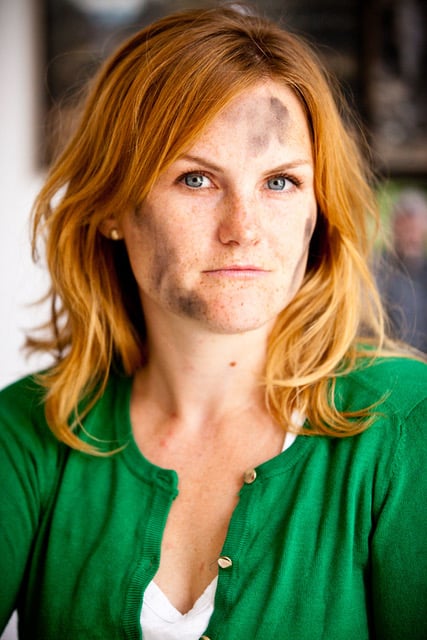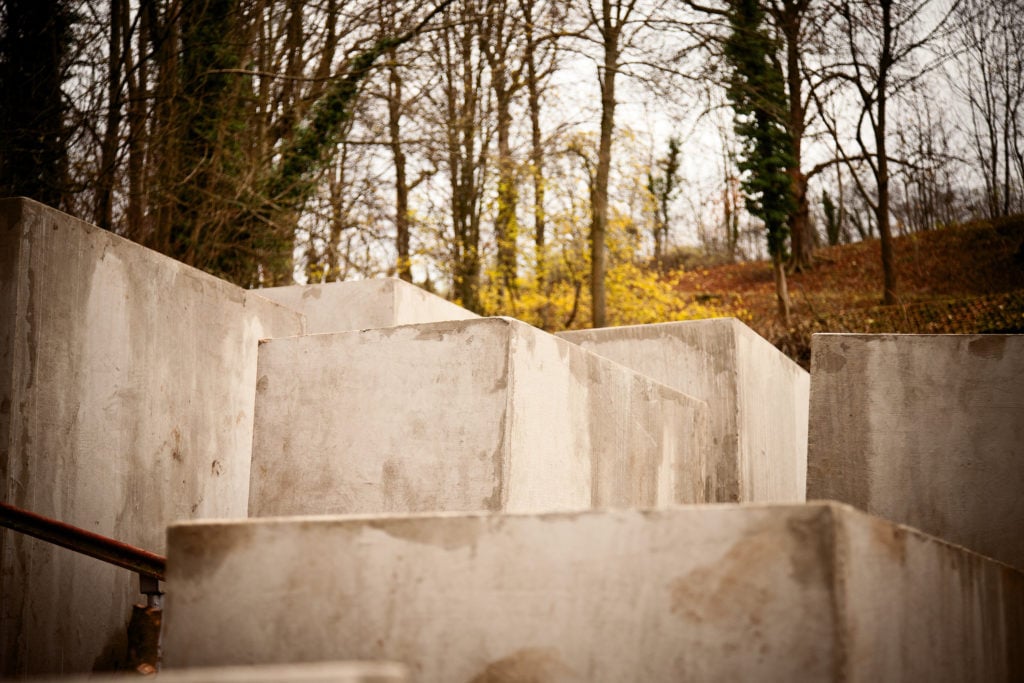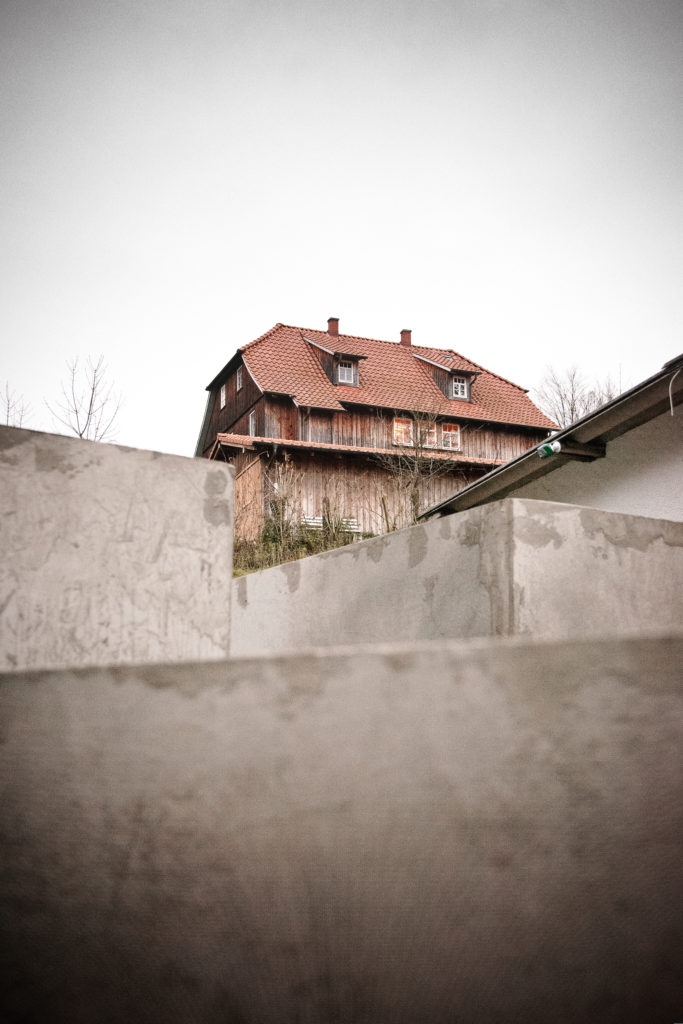Art World
How an Art Collective Is Mercilessly Pranking Germany’s Far-Right Politicians With Guerrilla Works
The Center for Political Beauty has installed a replica Holocaust Memorial outside the windows of a right-wing politician's home.

The Center for Political Beauty has installed a replica Holocaust Memorial outside the windows of a right-wing politician's home.

Kate Brown

In 1970, then German Chancellor Willy Brandt surprised the world when he fell to his knees in front of a monument to the Nazi-era Warsaw Ghetto Uprising in Poland. Brandt’s expression of humility in the face of Germany’s wartime atrocities has remained an iconic image.
But in recent times, factions within the far-right Alternative for Germany (AfD) party have called for citizens to stop atoning so much for the crimes of Nazis, with AfD politician Björn Höcke going so far as to call Berlin’s Holocaust Memorial a “monument of shame.” Though the party later apologized for his statements, the Center for Political Beauty, an activist art collective based in Berlin, doesn’t think that’s good enough.
Late last year, the collective unveiled their latest project, The Memorial, in Höcke’s hometown, Bornhagen. They installed the work, a smaller-scale replica of the Berlin memorial, in a rented garden directly in front of Höcke’s windows.
The group built and transported the 24 concrete slabs from Berlin and had them strategically installed so that townspeople wouldn’t notice. Despite outcry from citizens, the AfD, and Höcke’s family, the Center is planning to keep the work there for at least another five years, having raised sizable funding via crowdsourcing. But they’ve made Höcke a counter-offer: They will remove the work if he apologizes and falls to his knees before it like the former Chancellor.
We spoke with the Center for Political Beauty member Cesy Leonard about the collective’s motivations, goals, and the lawsuits that have been filed against them for the memorial (some resolved in their favor, others ongoing).

Center for Political Beauty’s Holocaust Memorial in Bornhagen with the home of Bjorn Höcke in the background. Photo by Patryk Witt/Center for Political Beauty.
Often when members of the Center for Political Beauty are photographed, they are wearing face paint. Is this an element of the work?
The color we wear is the color of coal. The story is that we are digging through Germany’s burnt hopes and couldn’t stay clean while doing so. It’s also in reference to the practice of face painting in combat. It connotes action and war.
The Center for Political Beauty describes itself as “an assault team that establishes moral beauty, political poetry.” How does this play out in The Memorial?
In the beginning of last year, the right-wing politician Björn Höcke made a dreadful statement with regard to the Holocaust Memorial in Berlin, describing it as a “memorial of shame.” For a small period of time the news about this circulated widely in the media, but only for a period of a few days. Nothing much happened after that. The Center for Political Beauty sees art as one of the most important ways of reaching people and allowing them them to further process the outrageous things people say or do. At that point, we began to research the possibilities of conceiving an artwork that would in some way surround him, and we came up with this memorial. As a work and as a gesture, it will always be like a thorn for Höcke. He must get up every morning and see this memorial, which is exactly in front of his house.

Center for Political Beauty’s Holocaust Memorial in Bornhagen. Photo by Patryk Witt/Center for Political Beauty.
I think that his family described it as psychological warfare.
When they said that they were referring to how the Center proclaimed in the media that we had been surveilling their property for the past nine months. Of course, we made this whole story up and we made that clear to the public later. But we wanted to play this myth out theatrically for a while because as we were researching the project we found many websites that assist people dealing with Nazism. One of the sites advised that, in case you are neighbors with a Nazi—which we are, in the case of this work—one of the most urgent actions you can take is to watch what they are doing every day.

Photo of the original Holocaust Memorial in Berlin by Ralf Schulze. Wikimedia Commons.
People who are not living in Germany might find it hard to imagine that there is still such active Nazism there. Can you describe the town where you installed the work?
There is a large and active Nazi community around the German regions of Thuringia and Bornhagen, which is where Höcke lives. It is important to know that these are not Nazis in the way you may have previously understood the term. These are not the neo-Nazis of the 1990s, walking around with shaved heads and baseball bats. This is a new generation of Nazis that are rising up politically alongside the so-called “Identity Movement,” which is a right-wing movement stirring across Austria and Germany in recent years. In response to the refugee crisis in Europe, citizens who have been conservative leaning have often moved further to the right. This is not just a German problem, but a trend occurring throughout Europe. The mindset comes from a fear that something is going to be taken away from them or that we, as Europeans, may soon not be as wealthy as we are now.
How long are you planning to keep the sculpture installed?
We established an initial timeline of two years based on our projections about the amount of money that we expected to generate through crowdfunding. But the resulting funds we raised far exceeded what we initially expected so we are planning to keep The Memorial installed for the next five years, and hopefully longer than that. There was also a lawsuit filed to try to have it removed, but we recently won the case, so now our long-term goal is to stay and also to convince others to build memorials on their surrounding properties.
Afd recently put forward a motion about art and freedom in the federal parliament as a result of this work. As I understood it, the government responded in January basically dismissing it.
Yes, it was an official question put forward to the Parliament in which Afd asked the whole parliament, “How free is art?” Their goal was to incite a response from the other parties and to cause legal restrictions around artistic freedom in Germany. It was unsuccessful.
What other lawsuits have been filed against you in regards to this project?
We have had lawsuits filed against us by the Höcke family, by our landlord, and by another nationalist party called the NPD. Some are ongoing, but some we’ve already won. As a result of a win in February my collaborator Philipp Ruch will be again allowed to be in the vicinity of the Höcke family. We are also now allowed to remain on the property for as long as we like.
Why did the Höcke family sued Philipp Ruch in the first place?
There was a photo that the Center for Political Beauty posted on Twitter that depicted a view of the memorial from the Höcke property. As a result, Ruch was forbidden to go within a distance of 500 meters of the family. But the truth is that we had simply re-posted a picture that was circulating in the news, not one that we had taken.
Hier ist erstmal der Höckeblick: So sieht Höcke das Holocaust-Mahnmal, wenn er morgens aufsteht! #höcke #beton https://t.co/vKecWDIfkb pic.twitter.com/w6XfJYh5Cr
— Zentrum für Politische Schönheit ? (@politicalbeauty) November 23, 2017
How did you construct the sculptures that make up The Memorial?
We worked with a great set designer, Inga Aleknaviciute, who tried out different materials in order to figure out how to build the sculptures without anyone seeing it happen. We experimented for three months to figure out how we could build it in Berlin and then transport the work to Bornhagen. We did the finishing touches on site , and it was quite funny, because we had to put covers over the sculptures, which looked like small tents—it was not unlike a refugee camp.
You have said that “art must hurt, provoke, and rise in revolt.” Why must art hurt?
We undertake political activism as art. In the current climate, where an image of a two-year-old boy lying dead on the outer borders of Europe touches us for only a few days and nothing changes, we believe that we need intervene as artists. We do that with a radical touch in order to really awaken people. Our goal is to create an initial outcry, but then to find a longevity and persist in the media, which ultimately allows us to access the hearts and minds of people. This is the way we want to create change.
“Origin Story” is a column in which we examine the backstory of an individual work of art.

Center for Political Beauty’s Holocaust Memorial with the home of Bjorn Höcke in the background in Bornhagen. Photo by Patryk Witt/Center for Political Beauty.